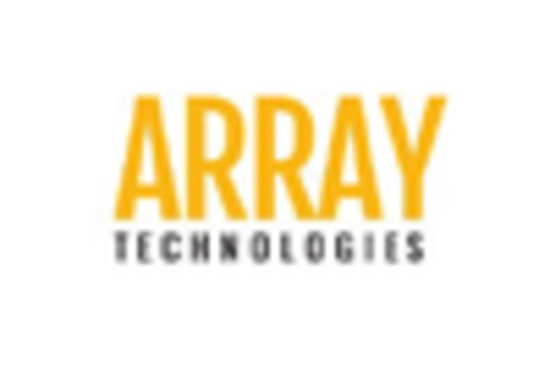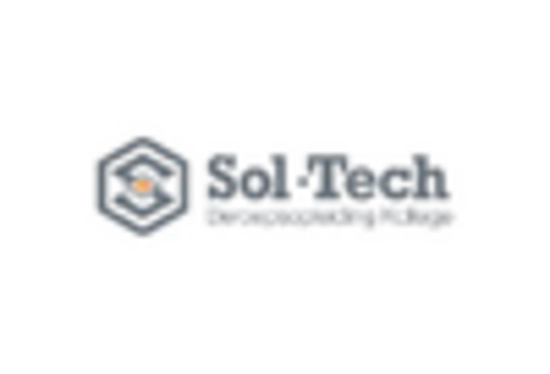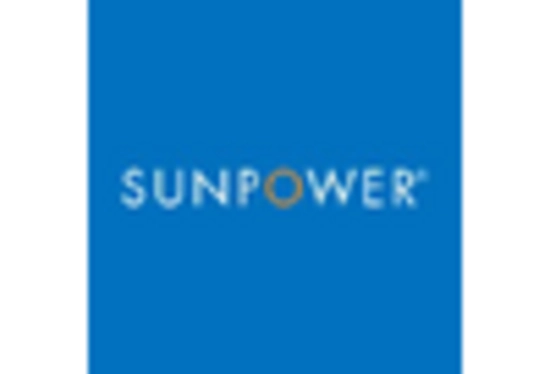Rising Energy Demand
The increasing The Dual Axis Solar Tracker Industry. As populations grow and economies expand, the need for sustainable energy sources intensifies. According to recent data, energy consumption is projected to rise by approximately 30 percent by 2040. This surge necessitates innovative solutions like dual axis solar trackers, which enhance solar energy capture efficiency. By optimizing the angle of solar panels throughout the day, these trackers can increase energy output by 20 to 40 percent compared to fixed systems. Consequently, the demand for dual axis solar trackers is likely to grow as energy providers seek to meet this escalating demand while adhering to sustainability goals.
Environmental Regulations
Stringent environmental regulations are increasingly influencing the Dual Axis Solar Tracker Market. Governments worldwide are implementing policies aimed at reducing carbon emissions and promoting renewable energy sources. For example, many countries have set ambitious targets for carbon neutrality, which necessitates a shift towards cleaner energy solutions. The dual axis solar tracker technology aligns well with these regulatory frameworks, as it significantly boosts the efficiency of solar installations. In fact, systems equipped with dual axis trackers can potentially reduce the levelized cost of electricity (LCOE) by up to 30 percent. This regulatory push not only encourages the adoption of dual axis solar trackers but also fosters a competitive market environment, where companies are incentivized to innovate and improve their offerings.
Technological Innovations
Technological advancements play a crucial role in shaping the Dual Axis Solar Tracker Market. Innovations in materials, sensors, and control systems have led to more efficient and reliable tracking solutions. For instance, the integration of smart technology allows for real-time adjustments based on weather conditions and solar intensity, maximizing energy production. Recent studies indicate that the efficiency of dual axis trackers has improved significantly, with some systems achieving over 90 percent tracking accuracy. This level of precision not only enhances energy yield but also reduces operational costs, making dual axis solar trackers an attractive investment for solar energy developers. As technology continues to evolve, the market is expected to witness further enhancements, driving adoption rates.
Investment in Renewable Energy
The growing investment in renewable energy projects is a significant driver for the Dual Axis Solar Tracker Market. As financial institutions and private investors increasingly recognize the long-term benefits of renewable energy, funding for solar projects has surged. Reports indicate that investments in solar energy have reached unprecedented levels, with billions allocated to new installations and technology upgrades. Dual axis solar trackers are often a focal point in these investments due to their ability to enhance energy output and return on investment. Furthermore, as the cost of solar technology continues to decline, the financial viability of projects utilizing dual axis trackers improves, making them an attractive option for investors looking to capitalize on the renewable energy boom.
Growing Awareness of Solar Energy Benefits
The rising awareness of the benefits of solar energy is a key driver for the Dual Axis Solar Tracker Market. As individuals and businesses become more informed about the advantages of solar power, including cost savings and environmental impact, the demand for solar installations is likely to increase. Educational campaigns and advocacy for renewable energy have contributed to this heightened awareness. Dual axis solar trackers, which maximize solar energy capture, are becoming increasingly popular among consumers seeking efficient solutions. Market data suggests that installations of dual axis solar trackers are expected to grow by over 15 percent annually as more stakeholders recognize their potential to enhance energy production and reduce reliance on fossil fuels.














Leave a Comment